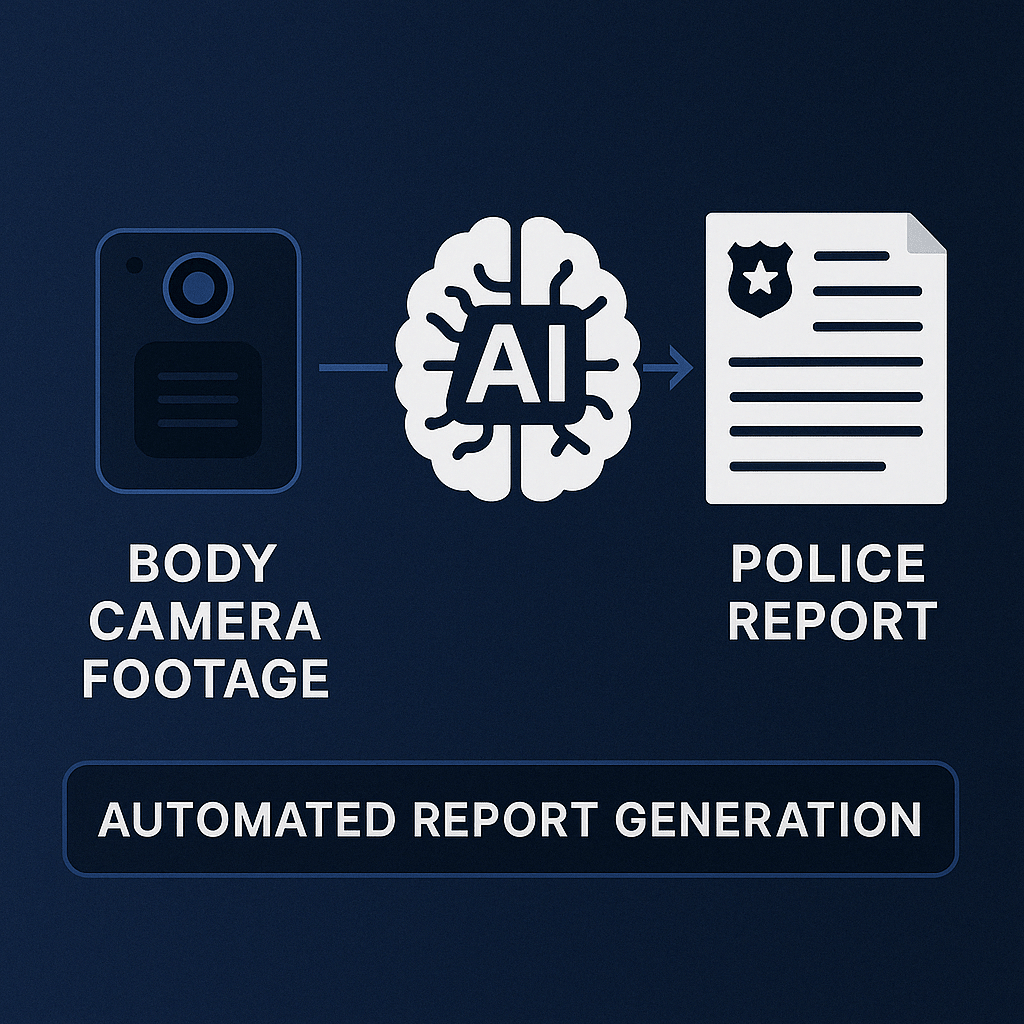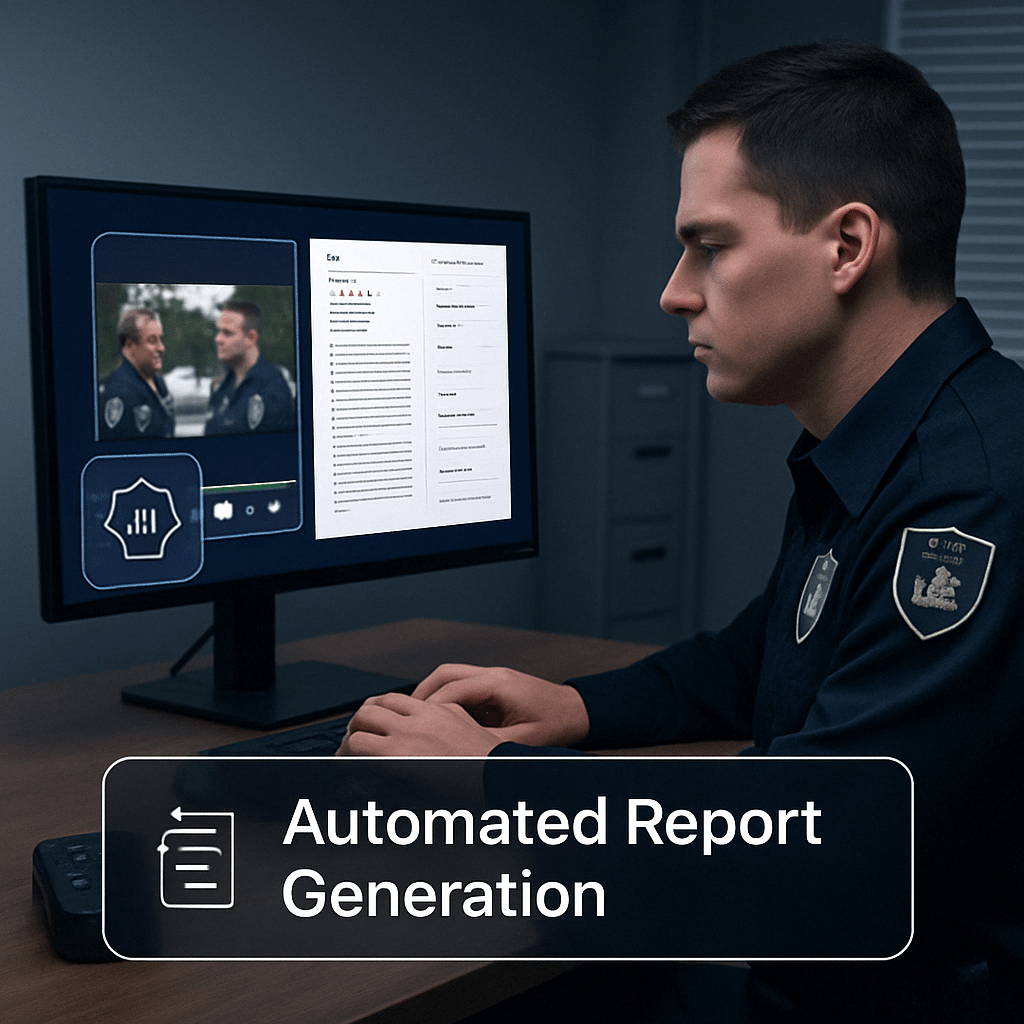Code Four’s Mission to Eliminate Law Enforcement Paperwork Through AI
In the ever-evolving landscape of public safety, Code Four emerges as a transformative force aimed at modernizing the workflows of police departments across the United States. Founded in 2025 and based in San Francisco, this innovative startup is leveraging cutting-edge artificial intelligence to streamline one of the most time-consuming and error-prone aspects of law enforcement: report writing and body camera footage review.
Police officers often spend up to a third of their shift transcribing and analyzing body-worn camera footage—a process riddled with inefficiencies, inaccuracies, and lost frontline engagement. Code Four exists to change that narrative. By acting as a software layer that integrates with body cameras, records management systems (RMS), and digital evidence platforms, the startup is redefining how law enforcement interacts with its own data.
What Problems Does Code Four Solve?
Administrative burden is one of the most significant pain points in modern policing. Officers must review hours of body cam footage, manually transcribe incidents, and write detailed reports that meet legal and procedural standards. This process is not only time-consuming but also subject to human error and inconsistency.
Code Four addresses these challenges head-on with its AI-powered video analysis and automated report generation. Their technology processes vast amounts of audiovisual data from body cameras, then instantly generates incident summaries, police reports, and briefings that align with departmental requirements. In doing so, Code Four significantly reduces administrative overhead while enhancing the accuracy and transparency of documentation.
Who Are the Founders Behind Code Four?
Code Four was founded by George Cheng and Dylan Nguyen, two innovators determined to apply frontier technology to a domain that desperately needs modernization. With backgrounds that blend engineering expertise and a passion for public service, Cheng and Nguyen launched the company with a clear mission: to support the most overworked and underappreciated professionals in the public sector—law enforcement officers.
Their mission isn’t to replace human judgment, but rather to enhance it. By enabling officers to spend less time on paperwork and more time serving their communities, the founders hope to rebalance the relationship between technology and public safety.
How Does Code Four Work?
At the core of Code Four's offering is a robust AI engine trained to analyze video footage frame by frame. The system doesn’t merely transcribe speech—it ingests audio, visual, and metadata to construct a complete narrative of an event. This allows the software to capture critical context, non-verbal cues, and chronological accuracy that traditional transcription tools miss.
Once processed, the system can generate multiple document types: from high-level summaries to detailed, legally compliant incident reports. These outputs are designed to align with the existing standards of police departments, minimizing the need for post-generation edits.

What Makes Code Four Different?
Speed, security, and compatibility are the three cornerstones of Code Four's platform. Their AI processes hours of footage in minutes and delivers usable reports in seconds. The system’s performance is engineered for real-world law enforcement needs—quick turnaround times, high accuracy, and reliability.
On the security front, Code Four adheres to FBI Criminal Justice Information Services (CJIS) guidelines. This includes end-to-end encryption and enterprise-grade infrastructure that ensures the confidentiality and integrity of sensitive law enforcement data.
Perhaps most importantly, Code Four is not a one-size-fits-all solution. The platform was built with direct input from law enforcement officers and administrative staff. This real-world feedback loop has helped ensure seamless integration with existing workflows, RMS, and CAD systems.
Is Code Four Compatible with Existing Body Camera Providers?
Yes, and this is one of the company’s key advantages. Code Four is built to integrate with all major bodyworn camera systems, including industry giants like Axon, Motorola, and Utility. The software is designed to sit on top of these existing systems as an enhancement layer—there’s no need for departments to switch hardware or retrain staff on entirely new platforms.
This interoperability reduces onboarding friction and allows departments to adopt Code Four without overhauling their existing technology stacks.
How Does Code Four Address Ethical Concerns Around AI in Policing?
AI in policing is a controversial topic, and Code Four approaches this landscape with a deep understanding of its ethical implications. The company does not aim to replace officers or their decision-making processes. Instead, it provides a framework where officers act as verifiers of reports, not mere authors.
This design philosophy promotes accountability and transparency. By automating the tedious aspects of documentation and preserving officers' ability to review and edit reports, Code Four fosters a balance between efficiency and human oversight.
What Does Implementation Look Like?
One of Code Four’s strengths is its rapid implementation timeline. For most departments, full deployment can be achieved in just 2 to 4 weeks. This process includes system integration, staff onboarding, and testing to ensure that the platform aligns with departmental standards.
Because the solution is designed with minimal disruption in mind, departments don’t need to halt operations or dedicate significant internal resources to deployment. Code Four’s customer success team handles most of the technical lift, allowing officers and administrators to focus on their primary responsibilities.
What Levels of Law Enforcement Does Code Four Support?
Code Four serves police departments at every jurisdictional level. Whether municipal, county, state, or federal, the platform is adaptable to each department’s unique needs and structures. This scalability makes it an ideal solution for both small-town agencies and large metropolitan forces.
The team at Code Four collaborates directly with departments to tailor the platform’s configurations, ensuring that each implementation reflects the department’s procedures, terminology, and documentation standards.
Why Is This the Right Time for Code Four?
The need for technology-driven reform in law enforcement has never been more urgent. Officers are under increasing scrutiny, and departments are expected to do more with fewer resources. Simultaneously, public demand for transparency and accountability continues to grow.
Code Four sits at the intersection of these pressures, offering a solution that supports both officers and communities. By reducing administrative workload, improving documentation accuracy, and fostering transparency, Code Four positions itself not just as a vendor—but as a vital partner in modern policing.

What Does the Future Hold for Code Four?
As AI technology matures, Code Four is poised to expand its capabilities. The team is exploring enhancements such as real-time video flagging, multilingual report generation, and predictive analysis for situational awareness.
Moreover, with a founding team committed to ethical innovation and user-centered design, Code Four is likely to remain at the forefront of AI-powered policing solutions. Their ongoing mission is clear: empower officers, modernize departments, and ensure that every frame of evidence is counted, contextualized, and accurately recorded.

